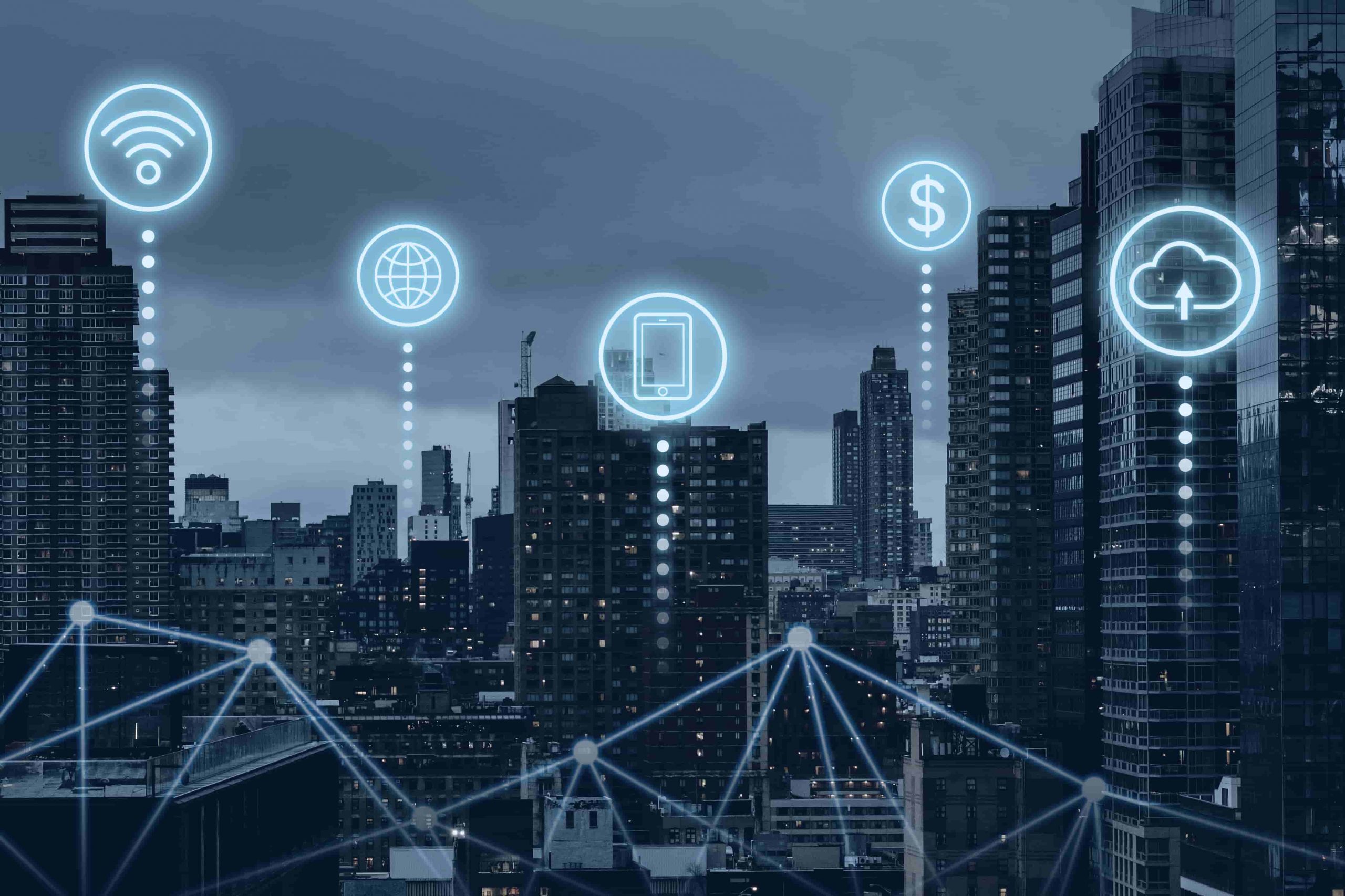What is Internet of Things (“IoT”):
Imagine you are on your way to a meeting; your car could have access to your calendar and already know the best route to take. If the traffic is heavy your car might send a text to the other party notifying them that you will be late. Your car transmitting data every second (or faster), talking to other devices, weather sensors, and traffic lights. Imagine driving without fear—where your car is a constant guardian, not just a vehicle. With IoT, where interconnected devices share critical data, this is all possible.
The Internet of Things (“ IoT ”) refers to the ability of everyday objects to connect to the Internet and to each other through small, embedded sensors and wired or wireless technologies. IoT is expected to spread rapidly over the coming years and this convergence will unleash a new dimension of services that improve the quality of life of consumers and productivity of enterprises. For consumers, the IoT has the potential to deliver solutions that dramatically improve energy efficiency, security, health, education and many other aspects of daily life. For enterprises, IoT can underpin solutions that improve decision-making and productivity in manufacturing, retail, agriculture and other sectors.
By enabling devices to communicate with each other independently of human interaction, the Internet of Things will open up new revenue streams, facilitate new business models, drive efficiencies and improve the way existing services across many different sectors are delivered.
Internet of Things (IoT)’s Application
# Transportation:
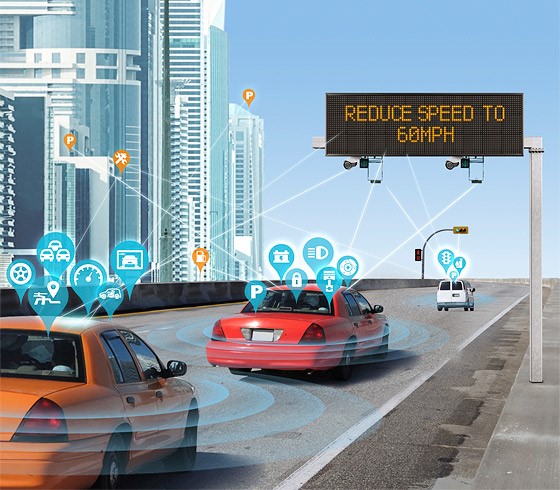
Imagine, before you leave for work, your smart phone displays your car’s condition—fuel, tire pressure, and brake pads levels. You’re informed of weather conditions and traffic patterns, and offered alternate routes as your car reads weather sensors and smart infrastructure. On the road, your car knows when the lights will turn, and guides you to adjust speed to hit the greens. On the freeway, your car alerts you that there’s debris in the right lane, 200 yards ahead, and instructs you to safely change lanes. Cars talk to one another, sharing data through secure, dedicated frequencies, while biometric sensors measure your cognitive abilities behind the wheel. Micro-level, time-specific, highly personalized information that helps you navigate safely.
This sensor-driven action prevents accidents, reduces the potential for injury and death, cuts emergency service costs, and decreases overall traffic congestion. Connected transit infrastructure enables a safer, more efficient driving experience from start to finish, on and off the road.
# Healthcare

The Internet of Things (IoT) could help shift healthcare from cure to prevention, and give people greater control over decisions affecting their wellbeing.
Clinicians will continue to play the central role in diagnosis. However, inexpensive connected devices can already monitor patients’ vital signs – blood pressure, heart rate and blood sugar levels for example – in near real-time. The stream of health data can immediately alert users to anomalies and can be analyzed to support early diagnosis. There are quantifiable benefits from early efforts to digitize healthcare, such as SMS reminders for clinical appointments reducing costly missed appointments. Smart devices may also increasingly be used to help patients with chronic health conditions; this data could be monitored by clinicians, intervening as required.
Imagine an emergency room visit, where seconds can save lives. Medical staff use IoT devices to access real-time patient data to deliver immediate care, while patient sensors automatically consent to share that data securely. In hospitals, smart IoT-connected kiosks provide real-time data about a patient’s medical history, as well as show key information about the room’s environment. Doctors no longer need to bring laptops—and the countless contaminants they contain—into hospital rooms to access patient records and make diagnoses. Equipped with smart devices installed in rooms, doctors can visualize patient data that is secured, aggregated, and normalized through advanced analytic algorithms.
# Agriculture and livestock
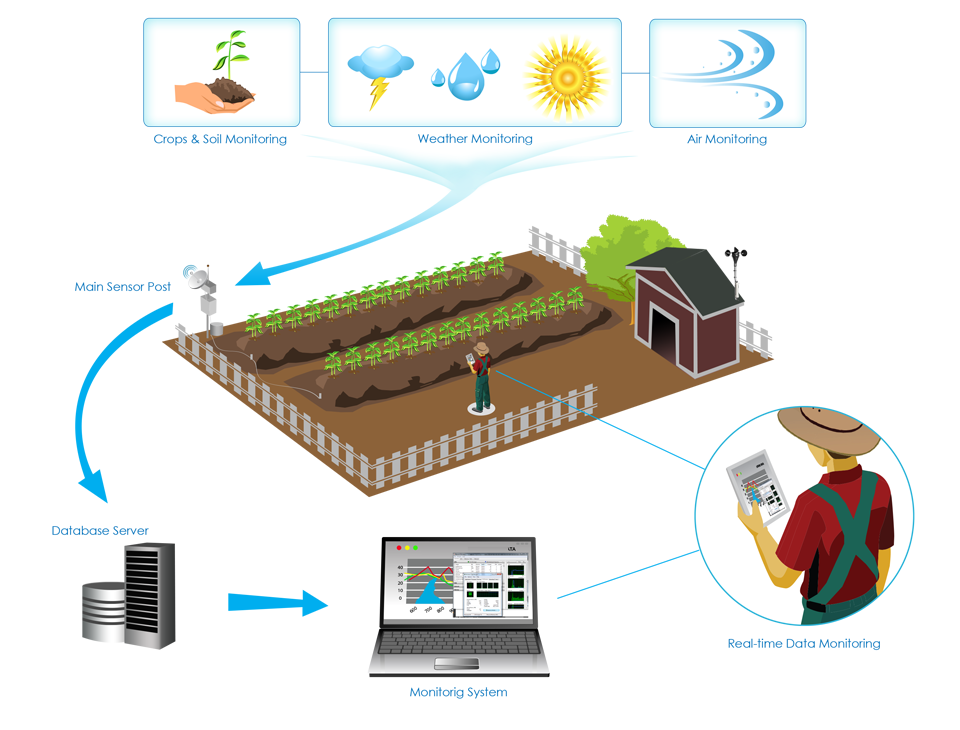
Field-based sensors can measure soil moisture and communicate with weather stations for the latest forecasts. This data is used by large farming operations to determine how much water to apply to crops and when to apply it. Other sensors can collect data on temperature, light, soil acidity and fertilizer content. As with many other sectors, the Internet of Things brings benefits in aggregate as well as to individuals. ’Smart farms’ may share data with other farms, different parts of the supply chain, regulators and consumers.
The Internet of Things has the potential to improve environmental protection while benefitting many different forms of agriculture. Livestock sensors could allow near real-time monitoring of cows, detecting injuries and illnesses within the livestock. This enables farmers to react faster to potential issues. Farmers and society stand to gain even greater benefits by openly sharing data. For example, algorithms could analyses data for patterns in diseases, enabling the early adoption of preventative measures.
# Energy
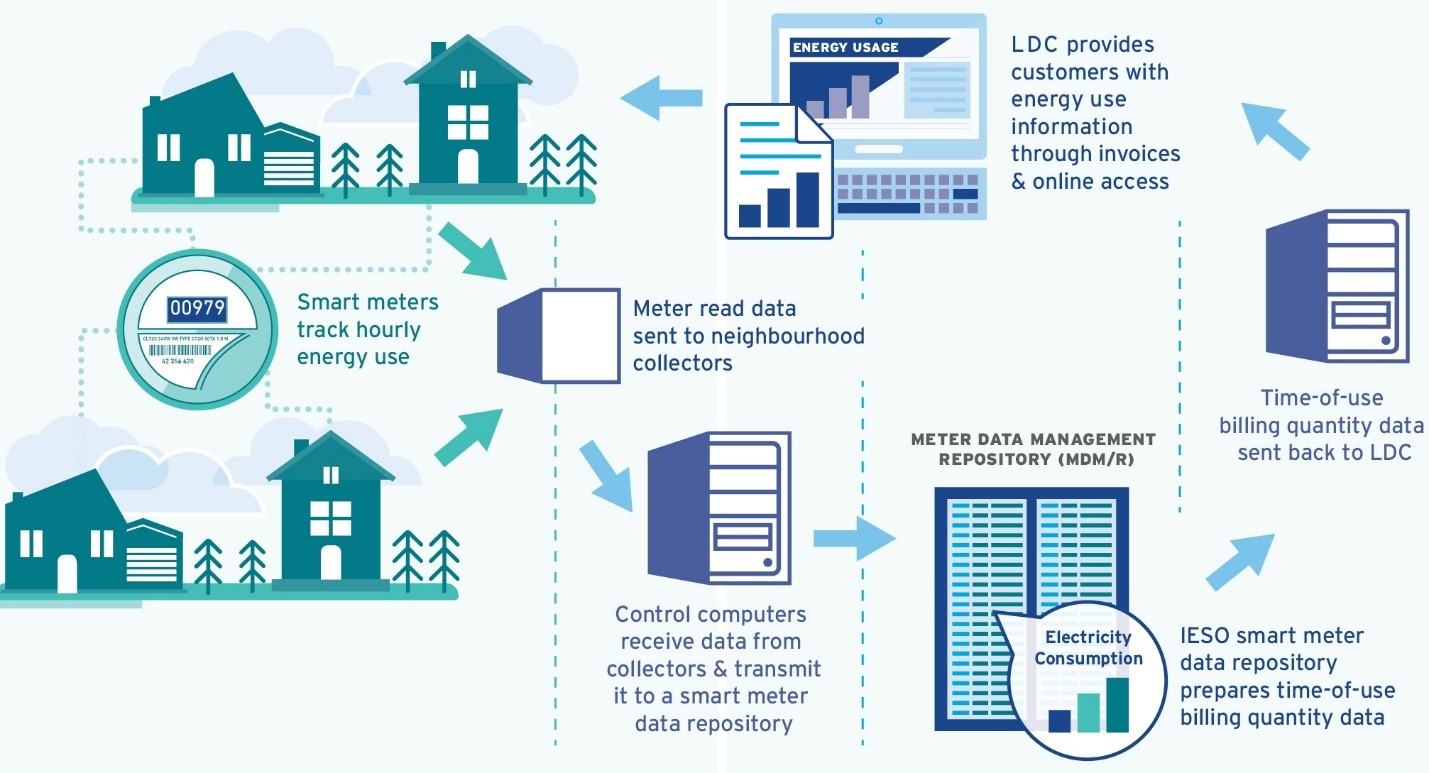
Matching or balancing energy demand with supply is one of the biggest challenges for the energy sector over the next decade. More intermittent energy generation combined with a greater number of battery powered devices such as electric vehicles and mobile devices could exacerbate pressures in all parts of the system. Smart meters will give consumers and businesses better feedback and more control over their energy use, as well as providing electricity distribution companies with a more sophisticated means of managing the risk of an interruption to supply. The Internet of Things will also increase the potential for intelligent supply-side management. Smart grids will respond to changes in demand by balancing supply with storage and intermittent sources; and by maintaining supply to essential systems, even down to the level of individual devices. The use of battery storage in connected devices (such as electric vehicles) may be used to shift load away from peak demand.
# Buildings and Home Automations
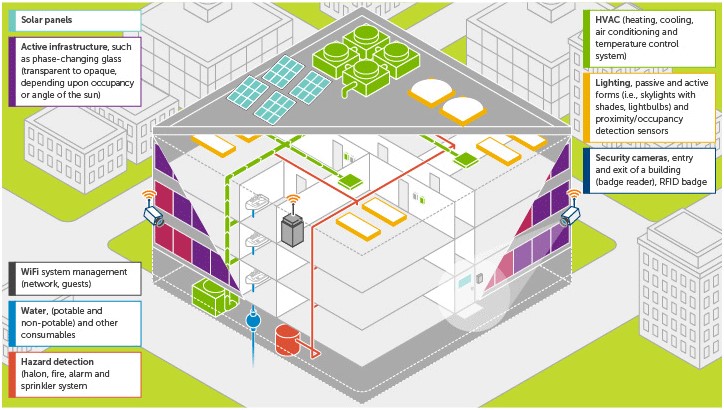
Smart buildings could become the hub for a wide range of Internet of Things applications. Sensors are increasingly being installed in buildings to gather data about movement, heat, light and use of space. This information could allow Building Management Systems (BMS) to make near real-time alterations to a building’s environment. Buildings connected to the Internet of Things could create significant opportunities for cost minimization through energy optimization and predictive maintenance.
Smart appliances in homes make the management and control much easier than appliances having its own controls or remote controls. Internet of Things allows the user to get the status information and also remote control capability remotely. Some of the appliances work based on IoT include smart refrigerators (that keep tracks of various items stored using RFID tags), smart thermostats to control the temperature, smart washer/dryers, smart TVs, etc.
# Educations:
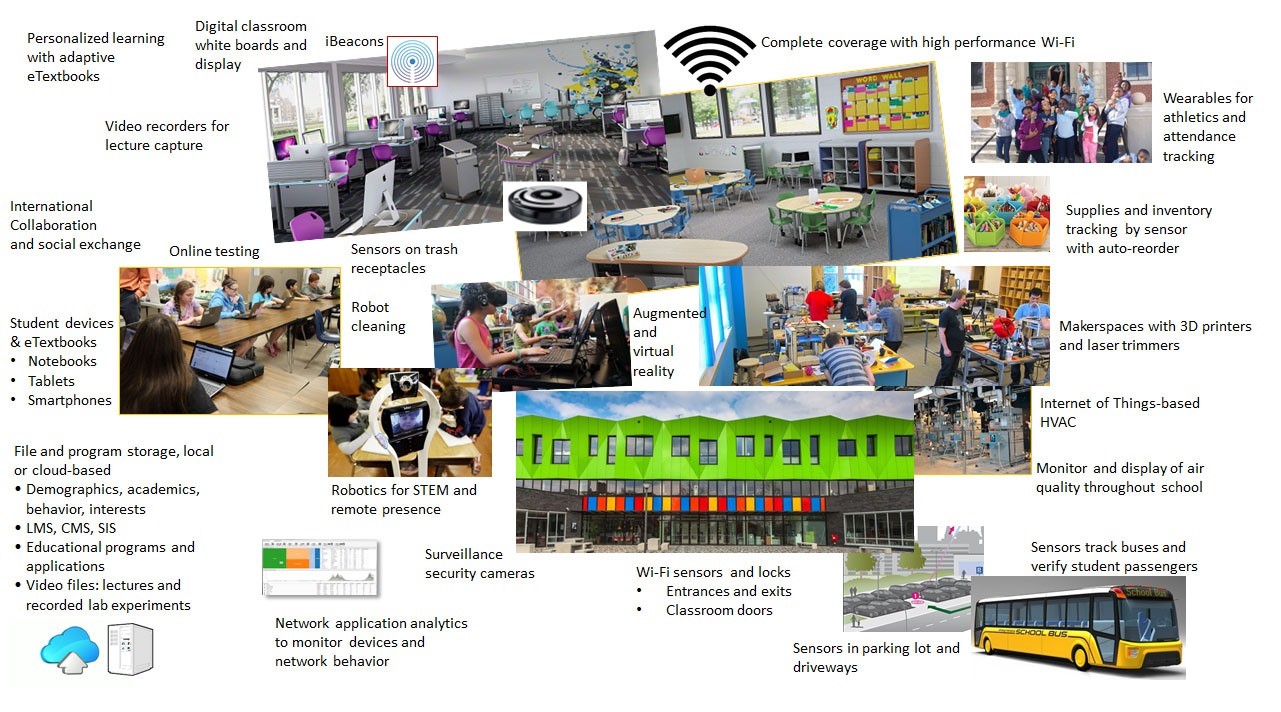
In education, sensor-based solutions will tailor the learning process to each student’s needs, improving overall proficiency levels, while linking virtual and physical classrooms to make learning more convenient and accessible.
With connected devices:
- Students do not need to carry heavy books in a backpack. All class materials are loaded on the smart device.
- Student attendance is automatically tracked. Teachers are aware of how far each student has progressed in their reading and how well they understand the content. Testing is easily administered digitally.
- Student well-being is monitored during athletic activities with smart wrist bands. Supply inventories and even waste baskets are tracked for optimal inventory management and cleanliness.
- Outside of the school, buses are tracked on Google Maps and school parking lots are managed with smartphone apps. Campus lighting is optimized to the instantaneous needs based on ambient levels, weather conditions, local activity, and anticipated patterns.
- Inside the school, airflow, air quality, temperature and humidity are constantly monitored and optimized in every possible learning space. Flat screen monitors are available in the classrooms to display data from student or teacher devices during collaborative sessions
Source:
2. https://www.boozallen.com/content/dam/boozallen/documents/2014/12/Internet_of_Things.pdf
3. http://www.extremenetworks.com/is-your-school-an-internet-of-things-smart-school
